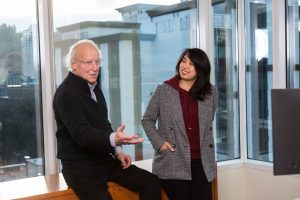
In a world where change is the only constant, the ability of leaders to adapt is not just valuable—it’s essential.
This story begins with a simple truth: organizations thrive when their leaders are as adaptable as the world around them. Adaptability isn’t just about changing direction; it’s about understanding the winds of change and using them to sail more effectively toward your goals.
For leaders, this means more than just tweaking tactics; it involves a fundamental shift in how they view challenges and opportunities. It’s about being open to new ideas, ready to question the status quo, and always looking for better ways to achieve the mission and vision they’re steering their team toward.
As consultants, our key value lies in our ability to identify and address the gaps in an organization’s strategy and operations. We also need to understand how to close these gaps with practical insights and interventions.
However, identifying the gaps isn’t always the true challenge. More often than not, the complex interplay of human dynamics is involved in any organizational change. In my years of consulting, I’ve consistently seen how crucial it is to really master communication, especially when it comes to being adaptable.
One of the most insightful experiences came from working closely with a mid-sized tech firm facing significant market pressures. The CEO, known for their sharp vision and knack for innovation, found themselves in a tough spot. They wanted the company to be quicker on its feet and more in tune with the fast pace of change. But getting there? That was the real challenge.
It’s a common story: even the most forward-thinking leaders can hit a wall when trying to shift old habits to new speeds. It’s about turning ‘what if’ into ‘let’s do.’
The initial diagnosis was straightforward – there was a clear need for a shift in the organizational culture to embrace change more openly. Yet, as straightforward as the diagnosis might seem, the path to realization was surely nothing of the kind.
It became apparent early on that while intellectually understanding the need for change, the CEO was emotionally anchored to the existing ways of working. This dichotomy between understanding and action is not uncommon, and it often leads to a cycle of ‘acknowledgment without action’ that can be incredibly frustrating for all parties involved.
“Why can’t they just see it?” became a recurring question in our internal discussions. But therein lies the fallacy—we were focused on the ‘seeing’ without appreciating the complexity of ‘believing.’
Instead of just pointing out what’s wrong, a strategy was developed using transactional analysis that focuses on acknowledging strengths and building up from there. The starting point was appreciating the CEO’s forward-thinking vision and the core values that had already brought the company so far.
This wasn’t about telling them what they were doing wrong – it was about building on what they were doing right. This ‘stroking’ validated their leadership and softened the defensive barriers that naturally arise when faced with the prospect of change.
Starting from a place of mutual respect and understanding, we slowly brought in the idea of adaptive leadership. This approach highlights the need for leaders to change their styles to match what the organization and the world outside it needs. By holding workshops, offering personalized coaching, and sharing examples from the real world, we helped move the discussion from being defensive to being more about curiosity and a willingness to try new things.
The CEO’s mindset shifted when they began to see the adaptive approach as a natural progression of the company’s vision instead of straying from its core values. Although the change was initially subtle, it gained momentum over time.
Over time, this shift brought about profound changes in decision-making processes, team management, and the cultivation of innovation.
Reflecting on such experiences, it becomes clear that change, especially within organizations, isn’t just about logically accepting a new concept. It’s more about the emotional path to truly embracing that change. The job of a consultant is to light the path through guidance, empathy, understanding, and clear communication.
Adopting a consulting approach that’s rooted in empathy and strategic communication goes beyond just methods—it’s about adopting a new way of thinking. It challenges consultants to look deeper than just the obvious problems, understanding the complex human factors at play. Whether working with CEOs, management teams, or whole organizations, the goal remains the same: to drive change that’s embraced fully, setting the stage for real growth and success.
Business consultants are known as the drivers of change. But their real success isn’t just about creating strategies; it’s about sparking deep, lasting change within. This requires a deep grasp of human behavior and the nuances of how we communicate. It’s all about making genuine connections and understanding what truly motivates people and organizations.
Their ability to produce desired results and have an impact in a complex environment of change is genuinely distinguished by their ability to customize their approaches to the unique circumstances of each client.
About Harold Goldstein:

Harold Goldstein, CEO and Founder of OPAD Consulting, has carved a distinguished path through the fields of human resources and organizational development, driven by a commitment to improving workplace environments. His journey from a challenging upbringing in a New York City ghetto to achieving higher education on scholarships reflects his resilience. Goldstein’s academic background, with degrees in Business Administration, Finance, and Industrial Psychology, laid the foundation for his professional achievements. Before establishing OPAD Consulting in 1981, he held senior HR roles at notable companies such as Levi, Johnson & Johnson, and Lam Research. He has also shared his insights as a professor of organizational behavior. Harold’s work is underscored by a deep-seated belief in the power of nurturing workplaces where people are eager to contribute and succeed.




